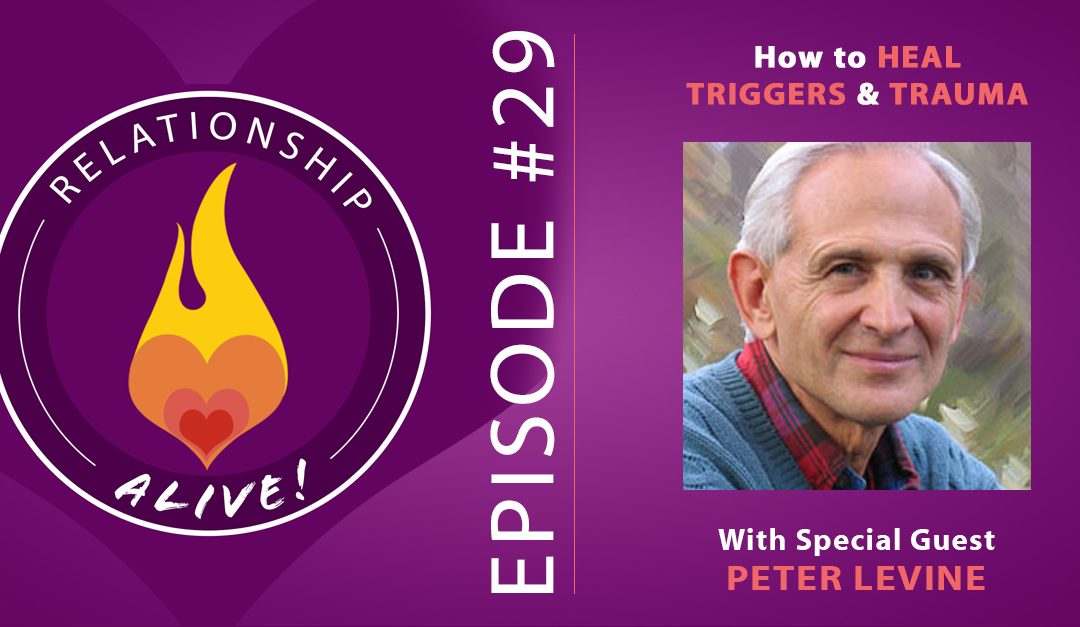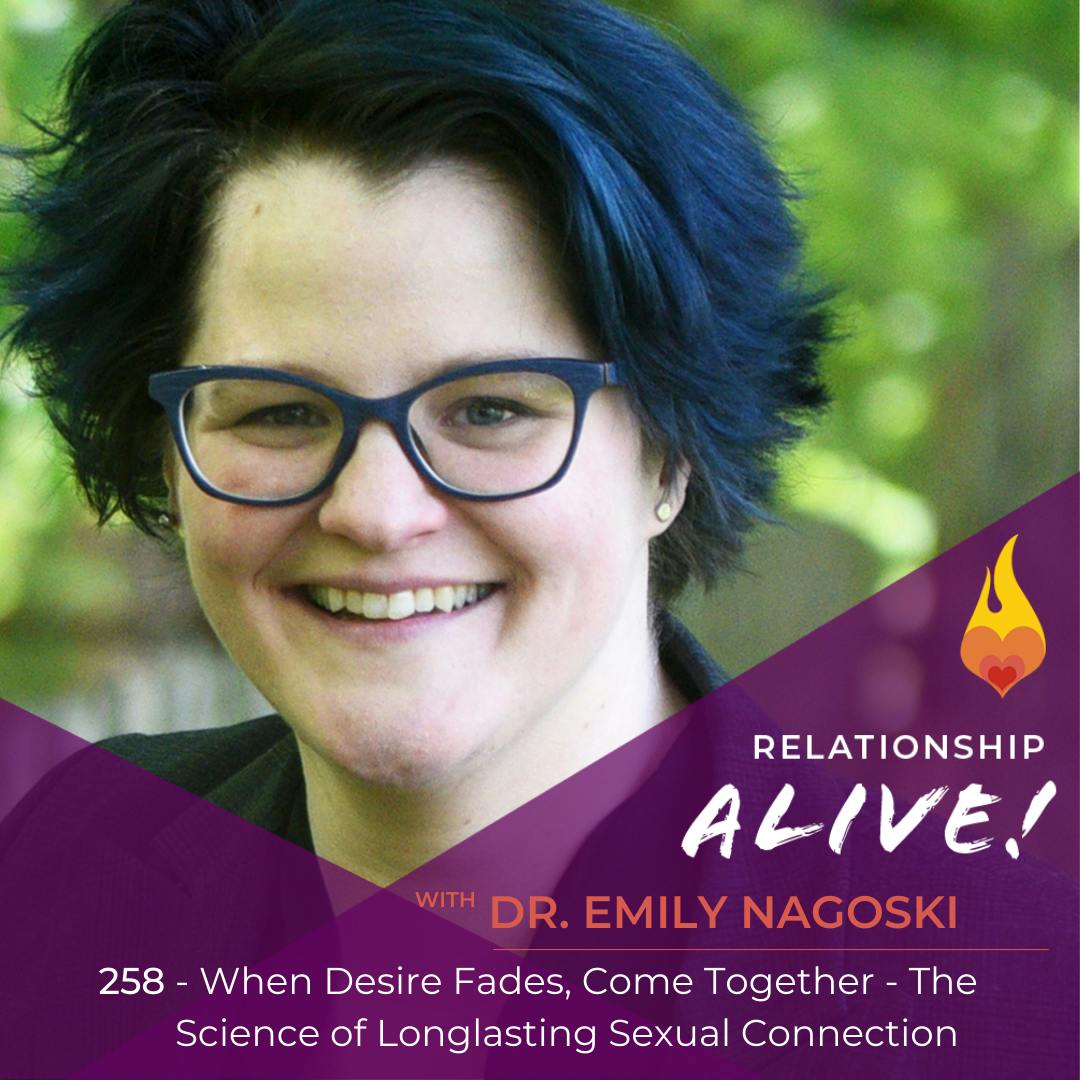On our show, we’ve talked a lot about getting “triggered” - but what does it even mean to get triggered? Why do we hold trauma in our bodies? And how do we move through it so that we can live more freely, be more fully alive - and present for what life is bringing us in the moment? And if you’re in a relationship, how can you and your partner help each other heal - either the traumas of the past, or the inevitable traumas that we cause each other?
Today’s guest is Dr. Peter Levine, one of the world’s foremost experts on Trauma, and author of many books on the topic, including “Waking the Tiger”, “Trauma & Memory”, and “Healing Trauma” - a book that guides you through a process for Healing Trauma and your triggers. He is also the creator of Somatic Experiencing, one of the most effective ways of dealing with the effects of trauma, and releasing trauma from the body with thousands of trained practitioners all over the world. In today’s episode, you’re going to not only learn how your body holds trauma and triggers, but also get some guidance into how you can, in the moment, come back into balance and actually allow yourself to fully move through whatever is stored in your body. We talk about how we can help each other in relationship - and we also chat a bit about how to apply Peter’s work with children.
In this conversation Dr. Peter Levine and I discuss the following:
The past lives in us. Our past lives in us in ways that we are often unaware of. Times when we may have been left alone, yelled at, hurt, neglected, abused, misunderstood, exposed to difficulty, or otherwise traumatized, all leave imprints on our bodies that can last through many years and decades. The question is not whether these memories exist in us, but how they live in us.
Implicit and Explicit Memory:
Explicit memories- These are the ones that we normally think about as things to remember. These are the thoughts and memories we are fully conscious of. Lists at the grocery store, directions, etc. Rarely has emotional content.
Episodic memories- these are also explicit memories, however they have a deeper quality. This is when, for example, you are sitting at the ocean and all of a sudden you have images from your childhood. Representative of parts of our lives
Implicit memories- These are even deeper. Emotional memory is when all of a sudden you find yourself angry, or frightened, and wonder what just happened. You may be feeling threatened and defensive. A fight might occur from this.
Procedural or Body memories- Even deeper than emotional memories are procedural or body memories. When we felt terrified our bodies experienced terror physically (shoulders go to our ears, we get a knot in our belly. heart going fast..) These are all autonomic and automatic response we have. Even if we understand why we are being triggered and the emotions that occur as a result, our procedural memories prime the pump and cause us to react in often inappropriate ways.
Triggers are echoes of memories stored in our bodies: If in a couple, both people have been traumatized in their life, it can happen that their fear and their anger will escalate, ricocheting off of each other. What is happening here is that our brains are wired to perceive threat and all the intense emotions ensuing as caused by something real. Our partner may do something, or not do something, or give a look, or say something, and all of a sudden our body reacts by developing a knot in the stomach, a tightening in the shoulders, faster heart beat… Our brains look to find causation for this symptomatic response, and often will attach blame to anyone near by! In this way we enter into situations where we begin believing “this must all be about you”, when in reality it is most often the result of an echoing of earlier memories stored in our own body. A relationship and interaction will go nowhere when both people are stuck in this velocity trap of blaming and shaming.
Somatic Experiencing helps people learn to experience their emotions and sensations in their body and notice all that goes on without having to react. It helps people go from being closed and defensive to open and curious- which is the key to trauma recovery!
Our relationships are constant sources for healing. Living, loving and being in constant interaction with our significant others provides endless opportunities for our triggers to be revealed! While this can be seen as very painful, burdensome, and unsexy, it is important to realize that every trigger offers an opportunity to heal! Our intimate relationships are ideal places to have our traumas arise, because we can face our memories and reactions with a trusted other who can share it with us, hold us, and be with us as we come into greater aliveness and joy! We cannot live our life with vitality and clarity when we are stuck in our habitual trauma responses.
Bringing your relationship into the here and now: The most important lesson for growth in relationships is learning how to individuate, together. To see the other as other, and not as a perception of our own fears and flaws. To do so it is critical to get to know ourselves- spiritually, sexually, psychologically, somatically...This is especially true when there is a history of trauma present in a relationship. Just as trauma causes the body to remain stuck in the past, trauma can keep a relationship from being in the present. To bring your relationship into a more current state, you need to learn to be in touch with your reactions and learn ways to move not around, but through them. Be direct- ask your partner “Can you just be here with me and give me a little support and time to figure out what I am feeling and sensing, and how it is connected to a memory?” Each time we can do this we can further and further uncouple from those trauma laden memories so that we can bring ourselves AND our relationships back into the here and now.
How to move through triggering moments:
Trauma is never graceful, and often it leaves parts of us, physically, emotionally, and psychologically, stuck. With support and guidance we can move through the stuckness. Consider animals in the wild. Although their lives are threatened on a routine basis, they are rarely traumatized (if so they would lose their resilience and go extinct). What is it in animals that gives them resilience? All mammals, including us, have identical instinctual fight and flight autonomic nervous systems to us, but other animals have the added benefit of remembering how to use the body to work through the traumatic experience. Animals shake. Literally. They shake their bodies which allows the body to process all of the hormones and neurochemicals involved in the fight/flight response. You have likely experienced this too- shaking and trembling in your body, cold hands, spontaneous deep breaths immediately after a scary event. It is important that we help support each other in allowing our bodies to work through our experiences similar to how other animals do. Somatic Experiencing developed as a methodology that imparts basic life skills to move through events that are potentially traumatized in order to gain a greater resilience and joy in life. These are skills everyone in the world could use! It would make for a better, safer, and more compassionate world.
Fight or Flight, then Freeze. Our autonomic nervous systems are wired for a fight or flight response to threat (real or perceived). If we are unable to follow through on either of these instincts, if these actions do not suffice, or if our system becomes too overwhelmed, the body will go into a state of apathy and collapse. It freezes. This shutdown stage is meant to be temporary, but sometimes we get stuck there due to fears that reinforce the paralysis. When someone we can trust is near us, it is possible to have less fear to truly sense the immobility, make contact with it, and move through it. Being in presence with the sensations will lead to deactivation and we can learn to see what memories are keeping us stuck, and from there learn to renegotiate our reactions, and our reactions to our reactions!
A good experiment to try: When we have been traumatized, especially in the case of sexual trauma, we try to isolate from our body (also known as dissociation, or soul fragmenting). It is as if the body has betrayed us and we begin to perceive it as the enemy. You can start by befriending and reconnecting with your own body. Pay gentle and nonjudgmental attention to your own reactions. With time it becomes softer and easier for you to reflect on your feelings, and your physical responses. You can do this with your partner. Agree not to have intercourse, but just to explore together. As soon as a trigger comes up, take the time together to integrate and be with the sensations in a patient and compassionate way. Know that our minds are clever but our bodies are wise! Our bodies know what to do, they are instinctive. Imagine what your body might have wanted to do at the time when it was violated-- push away, fight, run? Find safe ways to allow the body to express the desires and needs that it had but could not follow through with in the past. This brings power and energy back to the body, and helps hold compassion for the child, or younger version of yourself that could not defend or protect itself at the time. As we sort through the links between memories and reactions, we begin to mend again and return to a deep and full sexual, spiritual, psychological, and physical connection with partner.
Learning to recognize when you are triggered and work with the procedural body memories will help you find more freedom and more wholeness!
Tip to try with your child, and/or your partner: When your child is very angry, help give them a way to safely and effectively direct their anger. Most children find it difficult to deal with their own intense emotions because their parents have difficulty with them. As a parent, and as a partner to your significant other, you can help another feel their strength by directing their feelings into healthy aggression. Try this: put out your hand, make eye contact while you are doing this, and invite them to push your hand hard. Putting a lid on our anger puts a lid on all other feelings simultaneously. Allowing the body to safely express its sensations will help to release stuckness and lets us feel more alive!
VOOO: A wonderful thing to practice. This is a simple practice that helps you get present and out of a trauma response state. Take a full and easy inhale, and as you exhale make the sound “voooooooo”. Let the sound come from your belly and go until breath comes to an end. The next inhale happens automatically and naturally. Do several rounds to help calm your autonomic nervous system.
Resources
Learn more about Somatic Experiencing and find a practitioner in your area here.
Read some of Peter Levine’s books:
Waking the Tiger: Healing Trauma
Trauma-Proofing Your Kids: A Parents' Guide for Instilling Confidence, Joy and Resilience
https://www.neilsattin.com/trauma Visit to download the show guide, or text “PASSION” to 33444 and follow the instructions to download the show guide to this episode with Peter Levine - and to qualify to win a free copy of one of his books!
Our Relationship Alive Community on Facebook
Amazing intro/outro music graciously provided courtesy of:
The Railsplitters - Check them Out


